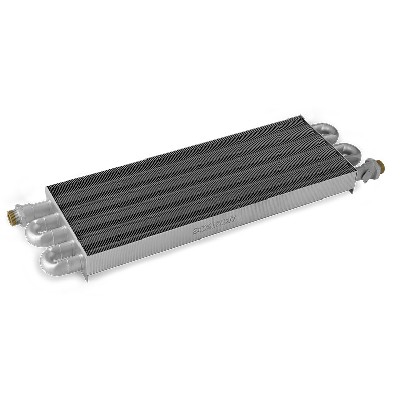What should be noted when designing a heat exchanger
Heat exchange efficiency: The central function of a heat exchanger is to complete heat exchange, so its heat exchange efficiency is a crucial parameter in planning. Need to use heat transfer data and structure, add heat transfer area and heat transfer coefficient to improve heat transfer efficiency.
Fluid dynamics characteristics: The fluid flow inside a heat exchanger has a significant impact on its functionality and stability. Reasonable planning of fluid channels and distribution methods is required to reduce fluid resistance losses and dead zones, in order to ensure uniform and stable flow through the heat exchanger.

Structure and information: The structure and information of a heat exchanger have a significant impact on its function and service life. According to the application conditions and requirements, select suitable structures and materials to meet the requirements of strength.
Production process and cost: The production process and cost of heat exchangers have a significant impact on their market competitiveness and application prospects. Advanced production technology and processes are required to improve production efficiency and quality, and together reduce production costs.
Protectability: The heat exchanger may require cleaning, protection, and other operations during operation. Reasonable structure and disassembly methods need to be planned to facilitate protection and cleaning, in order to extend service life and maintain functional stability.
Application scenarios and requirements: The planning and application scenarios and requirements of heat exchangers are closely related. Based on detailed application scenarios and requirements, taking into account the above factors, targeted planning and optimization will be carried out.
Article source: Zhongshan heat exchanger manufacturer Www.zsscrn.com
-
10-06
What are the common types of heat exchangers
There are many common types of heat exchangers, which are listed below:Shell and tube type heat exchanger: This is a type of wall type heat exchanger, which consists of a shell, heat transfer tube bun
-
10-06
What is the difference between a wall mounted furnace heat exchanger and a heat exchanger
Usage scenario: Wall mounted furnace heat exchangers are used for heating and daily hot water demand in homes or small commercial places, while heat exchangers are widely used in various industrial an
-
10-06
What should be noted when designing a heat exchanger
Heat exchange efficiency: The central function of a heat exchanger is to complete heat exchange, so its heat exchange efficiency is a crucial parameter in planning. Need to use heat transfer data and
-
10-06
What are the advantages of wall mounted furnace heat exchangers
Compact size: The wall mounted furnace heat exchanger has a compact volume and occupies less space, making it easy to install on the wall and suitable for limited space occasions such as homes and pub
